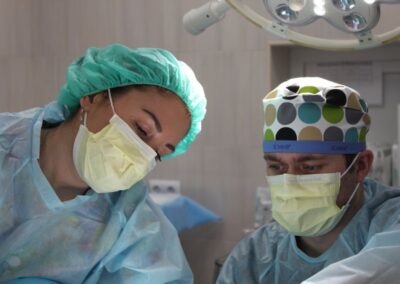For Effective Physician to Physician Communication, Direct Is Best
I must admit that I am getting more impressed with the ability of the various electronic medical records’ (EMR) ability to capture and transfer information. Slowly but surely, the profession is integrating the individual EMRs that hospitals and physicians have independently acquired, and are gradually developing a meaningful platform to support effective physician to physician communication and information sharing. This has not come easy, though, and we are far from done. EMRs are still the greatest source of pain and dissatisfaction amongst physicians and providers across the country.
Lack of appropriate physician to physician communication in patient transfers and handoffs increases medical errors; every time a transfer occurs, there is another opportunity to drop the ball. How does one physician know what the other is doing? And maybe more importantly, how does one know what the other is thinking?
Overreliance on EMRs
The electronic record, although very helpful, can also become a crutch. “I entered my consultation into the electronic record, so everyone should know exactly what I did with the patient,” physicians have said. Well, maybe. Just because the consultation note was entered electronically, one should not necessarily assume that all the parties have received, read, or even understood that referral.
At a minimum, it accomplishes the old CYA, as one can easily verify that the information was entered into the record. But did it accomplish the overall goal of optimal patient care? Did the other physicians receive that information? Was that information incorporated into the treatment plan for the patient? Did it improve the patient’s outcome? Was there a meaningful, interactional discussion of the treatment plan?
The New Way of Communicating
I come from a generation that talked to people. When I was in medical school we did not have texting, emails, or any kind of electronic record for that matter. When I made rounds in the hospital, I reviewed all of the written notes since my last note. If I had a question, I CALLED the other physician. True, we were not always immediately available to each other, but we ultimately connected. We talked, not just wrote. We interacted. We even disagreed on occasion, and rarely, expressed our frustrations by cussing at each other.
My kids hardly talk to me live any more. It is rare for me to call them on the phone and get a live response. However, if I text them, I usually hear back sooner or later. I know it’s not me. We have a great relationship. But texting is now the accepted norm, and texting has defined the new standard of communication. Mutual conversation is being replaced with icons, smiley faces, and goofy abbreviations. Relationships are started and ended over texts, as difficult conversations can sometimes more easily be texted than discussed. It is passive. It is distant. I think at times, it’s a cop out. It is just too darned easy.
So nowadays, we communicate electronically instead of vocally.
Admittedly, texts and emails are great for sharing information. But these media are horrible for interactive communication! Lengthy strings of texts, which now are considered the new dialogue, are nowhere near as effective as the old fashioned “let’s talk.” I have routinely misinterpreted numerous texts and emails that I have received. I can read what the person has written, but do I understand the context and feelings behind those texted words? Did I truly get the message?
Are we losing something valuable in the information sharing process amongst physicians by simply relying on the electronic revolution? Sometimes I wonder.
I appreciate technology. I see no need to turn back the clock and go back to the land-line telephone. In college, I communicated with my girlfriend long-distance by writing letters. Long distance telephone was too expensive. Each letter would take 3–4 days until she received it, and her response would take another 3–4 days to get back to me. We expected to have a week’s lag time in responses. Yet we were grateful. I recall my grandfather telling me he would typically wait a couple months until he received a response from a letter he had written to his loved one overseas. So, we have come a long way. Thank God for better technology!
But have we lost some humanity with the process? The tone of the voice. The inflection, or the pause. The wry humor, irony, or down right sarcasm. These have no place in electronic communications.
The Need for In-Person Physician Communication
So back to the docs. We all agree that communications are vital for good patient outcomes. We are getting more and more used to the keyboard. I can type faster now than I ever could in my high school typing class… and I can do it all with one or two fingers, while autocorrect does the rest.
Well maybe. Speaking of autocorrect, several years ago, I was traveling out of state and was missing my partner. Instead of calling her, I adopted the new technology and texted her: “Having a good time. Wishing you were here.” How sweet, I thought. She would love to hear that I was thinking of her during our absence.
However, the autocorrect instantaneously changed the message to the following: “Having a good time. Wishing you were HER !!!!”
Well, you can imagine my surprise when she immediately responded, by calling me back, and instead of some kind, cooing remarks, I received screaming over the line. What? I was caring and romantic. What went wrong?
Such misunderstandings can be humorous in everyday life, but incredibly serious in medicine.
So, docs, I get it. I love electronic medical records, the texts, the emails, etc. But sometimes it may just be good medicine to TALK. Call the specialist. Review the case together. Call back the referring physician. Learn what each one is thinking. “Deep six” those icons and emojis.
Let’s get back to more meaningful, effective physician to physician communication, for the good of the patient—and maybe for the good of our own mental health.
Let’s get low-tech sometimes. Let’s get back to the basics. When in doubt, just talk!!




